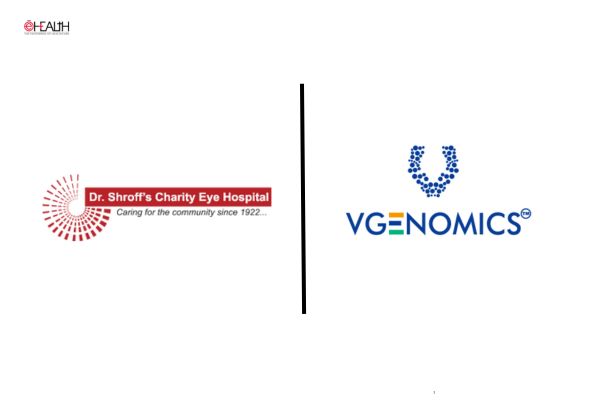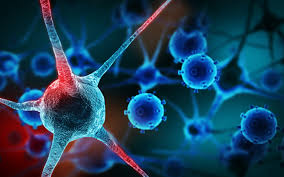
 Indians represent about one-sixth of the world population with statistics indicating a high burden of birth defects and genetic disorders. The birth defect prence in India as 64.4 per 1000 live births and 1 out of 20 children admitted to hospital have a genetic disorder that ultimately account for about 1 out of 10 childhood deaths.
Indians represent about one-sixth of the world population with statistics indicating a high burden of birth defects and genetic disorders. The birth defect prence in India as 64.4 per 1000 live births and 1 out of 20 children admitted to hospital have a genetic disorder that ultimately account for about 1 out of 10 childhood deaths.

Dr. Aparna Bhanushali, (PhD), Research Scientist
SRL R&D
Why are Genetic Disorders common in Indians?

The load of genetic diseases varies between populations depending on its structure, reproductive practices and other factors. In India language, religion and geographical location serve as barriers to random mating giving rise to several endogamous groups and inbreeding practices. This strongly increases the potential for excess of genetic disorders particularly the autosomal recessive type.

Types of Genetic Disorders

Human beings have 23 pair of chromosomes one set from each parent, 22 pairs are the autosomes and 1 pair is the sex chromosome (X and Y), these chromosomes house the genes. Genetic disorders could be due to abnormalities in either the chromosomes number (chromosomal abnormalities such as an extra chromosome 13 leading to Downs syndromes) or due to mutations in the genes (alterations in the DNA which is the genetic code), which are passed onto the offspring.

The genetic disorder is said have dominant mode of inheritance if a single copy of the abnormal gene or mutation (from either parent) can cause the disease (spinocerebellar ataxias), in contrast in the recessive mode of inheritance the disease will manifest if the offspring receives two copies of the abnormal gene (from both the parents- who are carriers e.g Sickle cell disease). Of the over 7000 diseases categorised as genetic disorders, more than 15 per cent have an established molecular etiology that is recessive in nature.
Another way genetic abnormalities are transmitted is X-linked, in these disorders the mutation are on the genes on the X-chromosome (Duchenne Muscular Dystrophy), so the male child will always be affected if he gets the abnormal X chromosome (as males have one copy of X- and one copy of Y- chromosome) and the females will be carriers (they will not manifest the disease as they have two X – chromosomes but can transmit it to the next generation).
Carrier Screening to Prevent Genetic Disorders
Each year, millions of healthy parents are taken by surprise when their children are born with life threatening genetic disorders. These parents are carriers (healthy individuals who nevertheless have a mutant version of a critical gene). Carrier screening has been a part of clinical practice for several decades.
Carrier testing for genetic diseases is considered medically necessary when one of the following criteria is met:
- The individuals have a previously affected child with the genetic disease OR
- One or both individuals have a first- or second-degree relative who is affected OR
- One individual is known to be a carrier OR
- One or both individuals are members of a population known to have a carrier rate e.g B-thalasemia among the Sindhis, Gujarathi community, sickle cell among the tribal belts of Chattisgarh
The goal of carrier screening is to identify couples who are at risk of having a child with the disorder, thus allowing carriers to make informed reproductive choices.
Francis Collins the director of National institute of Health (NIH USA) in his book the Language of Life has opined If I were younger and about to start a family, I would want to test myself and encourage my wife to do the same“not just for CF (cystic fibrosis) but for a long list of recessive diseases.
But our current model of delaying carrier screening until a pregnancy is already under way forces couples to make tough choices, and deprives them of pre-conception alternatives that they might have preferred.
Decision making organisations such as the American College of Medical Genetics (ACMG) and American College of Obstetricians and Gynaecologists (ACOG) recommends testing for specific mutations, which will result in a carrier detection rate of ≥95 per cent for most disorders. In fact for hemoglobinopathies (haemoglobin disorders) for carrier screening, ACOG recommends that individuals of African, Southeast Asian and Mediterranean descent are at risk for being carriers of hemoglobinopathies and should be offered carrier screening and, if both parents are determined to be carriers, genetic counselling.
Benefits of Carrier Testing
Carrier testing allows informed choice, it enables prevention and actions can be taken to have a healthy baby. For e.g
- Prenatal testing to look for the relevant mutations in the amniotic fluid or the chorionic villus samples will indicate if the fetus is likely to be diseased and appropriate choices can be made
- In cases of couples opting for IVF procedures pre-implantation genetic diagnosis may be considered if they are both carriers
- Alternatively donor egg/sperm may be considered for certain cases
- For carriers of metabolic disorders, the child can be screened post-natally and early childhood treatment initiated.
Recent Advances in Carrier Testing
The recent advances in molecular technology have catapulted options for carrier screening.
PCR (Polymerase Chain Reaction) based methods where amplification of the specific gene followed by sequencing of the gene to look for mutations is the tool of choice for carrier detection. However in recent times there is a predilection towards expanded panels as opposed to gene- by gene sequencing.
These expanded panels screen for almost more than 100 different genetic disorders with >500 different mutations being analysed, the technology could be array based chips which includes probes for all the mutations. Expanded panels may include the diseases that are present with increased frequency in specific populations, but typically include testing for a wide range of diseases for which the patient is not at risk of being a carrier.
Multiplex Ligation Probe Assay (MLPA) is one more technology, which tells whether the person is carrier by determining that he has two copies of a particular gene or only one copy of the gene, (one copy may be deleted). This is critical in case of certain disorders like Duchenne Muscular Dystrophy which is X-linked or Spinal Muscular atrophy where the deletion of certain regions of the gene can cause the disease.
Another technology creating a buzz is Next Generation Sequencing (NGS), a transformative technology which has enabled new tailor-made approaches to carrier testing In NGS multi- gene panels can identify carrier for the rarest of the genetic disorders as well as provide diagnosis for affected cases. A few examples are given below to help understand the wide flexibility that NGS offers both in terms of diseases as well as the number of genes being analysed.
- BRCA1 & BRCA2 carrier test for women with a family history of Breast Cancer) ( 2 genes)
- X-linked Mental retardation
- Arrhythmogenic Right Ventricular Dysplasia/Cardiomyopathy (7 genes)
- Dilated Cardiomyopathy (38 genes)
To sum up carrier tests help individuals discover whether they are carriers, while couples learn their probability of conceiving an affected child. Raising children with certain genetic disorders exacts substantial personal and financial sacrifices. These diseases cannot be cured, but they can be prevented. With carrier testing the needless suffering caused by dozens of preventable genetic diseases can END.
Be a part of Elets Collaborative Initiatives. Join Us for Upcoming Events and explore business opportunities. Like us on Facebook , connect with us on LinkedIn and follow us on Twitter , Instagram.
"Exciting news! Elets technomedia is now on WhatsApp Channels Subscribe today by clicking the link and stay updated with the latest insights!" Click here!
















